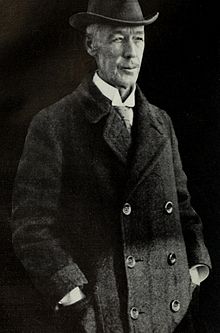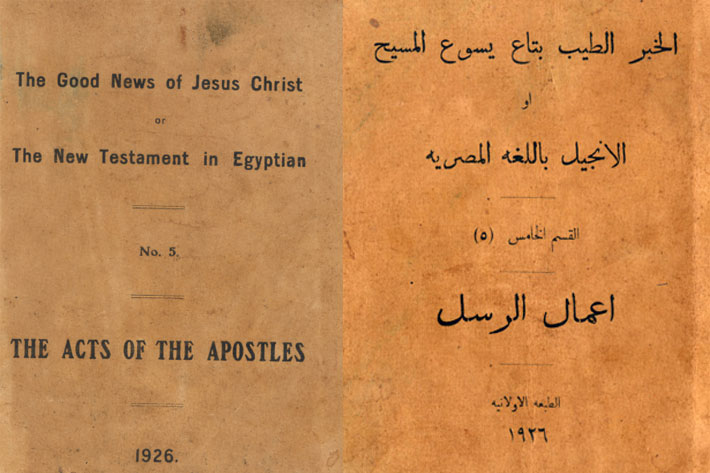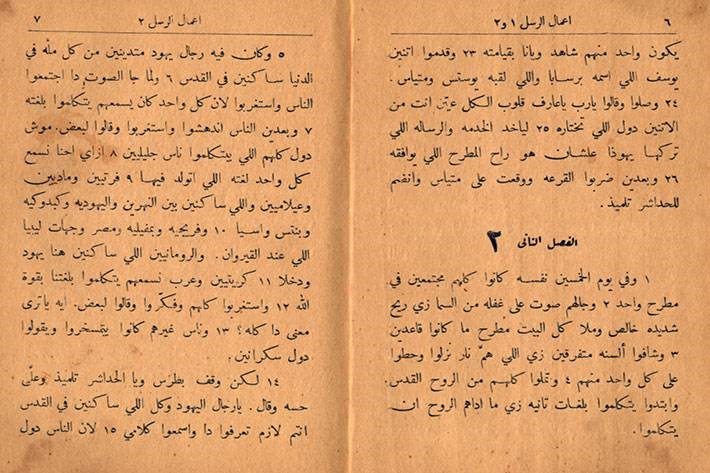by Sameh Hanna1

In an interview published in 1927 in the Cairo-based monthly al-Hilāl, Egyptian intellectual and reformist Salama Musa (1887-1958) asked a retired British civil engineer, among other things, about what made him happy at the end of his career. The then 74-year old Sir William Willcocks (1852-1932) replied: “obeying God and fulfilling Christ’s purpose by serving people… and by printing the gospel in the colloquial so that the common people would have access to Christ’s words and sermons. In this I find more happiness than I used to find in engineering” (Musa 1927:1165). Based on available biographical information, it seems that Willcocks’ fame as a successful irrigation engineer, completing such projects as Aswan Dam, among others in Egypt and other countries, was as equal as his reputation for involvement in missionary activities. In one of its weekly editions in 1928, the Egyptian newspaper al-Siyāsa dedicated a whole page to Willcocks. This newspaper usually caricatured an Egyptian statesman every week, but in that particular weekly issue they “poked dry humour at Willcocks, even sketching him on the front page with an open Bible, and dressed in parson’s clothes with a dog-collar.” (Upson 1928: 82). At the centre of his interest in Christian mission was his passion for translating the New Testament into Egyptian Colloquial Arabic.
The first edition of Willcocks’ translation of the New Testament (entitled in Arabic Al-Khabar al-Ṭayyib bitāʿ Yasūʿ al-Masīḥ) was published in five serialised volumes that started with Matthew and Mark’s Gospels, published in one volume in 1921, followed by Luke and John’s Gospels (volume 2) and Book of Acts (volume 3) in 1926. The first edition of the translation was completed in 1927 with two more volumes, Selections from Early Epistles (volume 4) and Selections from the Later Epistles (volume 5). The translation went into a second edition in 1928 and Saʿīd (1964/1980, 61) indicates that she had access to a 1949 edition of it, after which time the translation seems to have gone out of print. In addition to his translation of the New Testament, it is claimed that Willcocks also translated the books of Genesis and Psalms into the Egyptian vernacular (ibid), but there is no evidence to support this claim.
This translation project was motivated by Willcocks’ firm belief in the expressive potential of Egyptian colloquial Arabic and its ability to communicate the loftiest ideas in literary as well as sacred texts. He took this belief to the public domain much earlier, when in 1893 he gave a public lecture entitled ‘Why does not the power of invention exist among Egyptians now?’ In answering the question, he mainly argued that thinking and writing in fuṣḥa (a language register that Egyptians learn at school) is the main reason why Egyptians lack in creativity and inventiveness. He emphasised the potentials for using ʿāmmiyya in literature, giving the example of the British people who rejected Latin and adopted English2 as their language of literary expression and hence achieved progress (al-Dusuqi, 1948/2000, 44-5). To make his point, he published extracts from Shakespeare’s Henry IV and Hamlet translated in the Egyptian colloquial. More than two decades later, he published his translation of the New Testament, co-authored by an Egyptian Christian by the name of Manṣūr Effendi Bakhīt. The translation was published with the Nile Mission Press, a Cairo-based publishing mission that was so active in publishing Christian literature in Arabic vernaculars, not only in Egypt but in other Arab countries. Founded by two British missionaries, Annie Van Sommer and Arthur T. Upson in 1905, Nile Mission Press (NMP) was operated from Tunbridge Wells, England, though based in Cairo. NMP was known for publishing translations in the colloquial and Menzie (1936: 169) reports that the “late Sir William Willcocks said that the Nile Mission Press was the only Press that he knew which took pains to print colloquial accurately.”



One key linguistic feature of al-Khabar al-Ṭayyib is its tendency to concretise abstractions, using familiar idiomatic expressions in Egyptian Arabic which appeal more to the senses, compared to the translation strategy followed by the Bustānī-Van Dyck version (1865). One such example is the translation of σκιρτάω in Luke 6: 23, where the Greek verb is rendered into ‘leap for joy’3 in the English Study Version. In al-Khabar al-Ṭayyib, the verse is rendered as follows:
افرحوا في داك اليوم وطيروا من الفرح علشان نصيبكم رايح يكون كبير في السما وكدا كمان والديهم عملوا ويا الأنبيا
(Willcocks and Bakhit, 1928 B: 30)
While al-Khabar al-Ṭayyib uses طيرو من الفرح (ṭīrū minil faraḥ), literally meaning ‘you fly out of joy’, Bustānī-Van Dyck uses the classical, almost archaic imperative تهللوا (tahallalū). Although the latter translation communicates a higher degree of rejoicing, it is very formal, not commonly used in Arabic and, more importantly, falls short of communicating the powerful image of the Greek word which literally means ‘jump for joy’. This example demonstrates, not only the exegetical endeavour made by Willcocks and Bakhīt to grasp the meaning of the Greek text, but their keen interest in reproducing in Arabic what many scholars describe as the ‘incarnational’ nature of the Bible.
Sameh Hanna
Director of the Arabic, Islamic and Middle Eastern Studies at the University of Leeds, UK; co-director of the Centre for World Literatures and lecturer in Arabic Literature and Translation. His research interests include sociology of translation, Shakespeare in Arab culture and translating sacred texts on which he published numerous articles in peer-reviewed journals and chapters in edited volumes. His book, Bourdieu in Translation Studies: the Socio-cultural Dynamics of Shakespeare Translation in Egypt was published with Routledge in 2016.
Suggested Citation: Sameh Hanna, “The British Civil Engineer who made Jesus speak like an Egyptian: William Willcocks and al-Khabar al-Ṭayyib bitāʿ Yasūʿ al-Masīḥ”, Biblia Arabica Blog, 19 March 2019, DOI: https://doi.org/10.5282/ubm/epub.121799/.
Footnotes[1] This is an extracted version of an article that will be soon published in a special issue of the journal Religion entitled Translation and Religion: Crafting Regimes of Identity.
[2] A similar line of argument was given by Mustapha Safouan (1998) in the introduction he wrote to his published translation of Othello into Egyptian colloquial Arabic. For a detailed study of the history of the debate on the use of fuṣḥa and ʿāmmiyya in writing, see Hanna (2009).
[3] The verse reads: “Rejoice in that day, and leap for joy, for behold, your reward is great in heaven; for so their fathers did to the prophets (Luke 6: 23, ESV).”
References


Leave a Reply